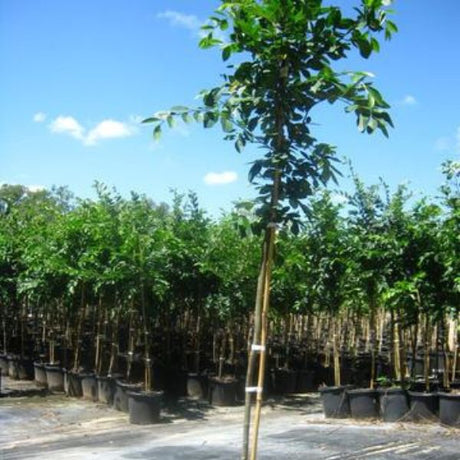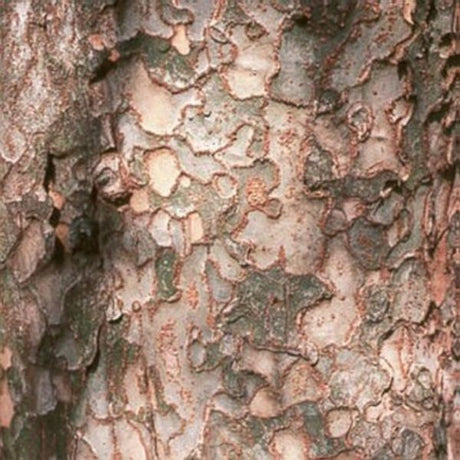- Regular price $13981Unit price /Unavailable
- Regular price $000Unit price /Unavailable
- Sold outRegular price $14990Unit price /Unavailable
- Regular price $10981Unit price /Unavailable
- Sold outNew arrivalRegular price $000Unit price /Unavailable
- Regular price $000Unit price /Unavailable
- Regular price $000Unit price /Unavailable
- Sold outRegular price $000Unit price /Unavailable
- Sold outRegular price $000Unit price /Unavailable
- Sold out
- Sold outRegular price $14990Unit price /Unavailable
- Sold outRegular price $000Unit price /Unavailable
- Sold outRegular price $000Unit price /Unavailable
- Regular price $000Unit price /Unavailable
- Sold outRegular price $000Unit price /Unavailable
- Sold outRegular price From $3257Unit price /Unavailable
Shade Trees for Sale at Nature Hills Nursery
Shade trees are usually the first plant chosen for the front and back yards of new homes, and with very good reason. Fast-growing shade trees give a homey feel to urban neighborhoods. Their stature, strength, and potential for long life provide a sense of permanence. And they grow into living memorials for the person who planted and nurtured them.

You’ll find a wide range of gorgeous shade trees for sale right here at Nature Hills Nursery. Fast-growing shade trees are some of our most popular sellers, and they’re also the most sought-after trees in the United States.
As the largest elements in the landscape, shade trees come with plenty of year-round benefits.
Both evergreen trees and deciduous trees are used for shade. You'll find plenty to look at in our online shade tree nursery.
Benefits of Shade Trees
- Anchor your landscape design
- Beautify the landscape
- Convert carbon dioxide to oxygen
- Cool your family and friends on long, hot summer days
- Increase property values
- Provide habitat for birds and small mammals
- Reduce heating and cooling costs of houses and buildings
- Reduce the heat reflected from paved or asphalted areas
Choose Nature Hills Nursery for a vast selection of high-quality shade trees. We have, after all, been in the tree business since 2001.
Our expert growers do a terrific job packing the trees for safe and secure transport. We will only ship when the time is right for planting in your area.
If we are shipping shade trees to you, that means it's a fine time to plant them in your area. Go ahead and place your order to buy shade trees when you see a variety you cannot live without, and we’ll reserve it to ship it your way when the time is right.
Another bonus is the ability to track your package right to your doorstep. Few things are easier or more satisfying than buying shade trees from Nature Hills Nursery.
Choosing the Right Shade Tree for Your Landscape
Make a great choice for a successful shade tree by selecting the proper shade tree for the growing conditions at your individual site.

For best results, consider the following growing conditions:
- Space available
- Existing plants and trees
- Available sunlight
- Soil drainage, or how quickly water soaks into the ground after rain
- Soil type and pH (acidic or alkaline soil)
- Above and below ground utilities
Choose a shade tree that will perform well in the local climate for both heat and cold. Filter your search by your USDA growing zone as well as the mature height and spread of the tree.
We recommend that you select a right-sized shade tree. Take the size of your home and lot into account to keep things in balance.
Very large shade trees complement large homes but may overwhelm smaller houses. In tight spaces, be sure to look at our Columnar trees that have a narrow profile.
Biodiversity Protects Your Shade Tree Investment
Biodiversity isn't just a catchphrase. Unfortunately, America learned a hard lesson from Dutch Elm disease.
Use the same philosophy touted by city planners and commercial property owners. Include a diverse mix of shade trees to ensure the overall health of your plantings.
Native shade trees like the magnificent Tulip tree and Weeping Willow can be used as the feature trees on large properties. Layer in Redbud flowering trees that live in the partial shade of the understory.
Where to Plant Shade Trees
Place shade trees on the south or southwest of your property to cast their shade on your home. You'll love the energy savings.
Shade trees can grow from 50 to 80 feet tall. But even smaller flowering shade trees, like Flowering Crabapples can shade your patio or porch.
The right tree in the right place will prevent root issues that affect sidewalks, driveways, foundations and septic systems.
Read the #ProPlantTips blog on tree roots, water pipes and pavement >>
How to Plant Shade Trees

Plan for the arrival of your new shade tree. If you order a large ball and burlap tree, we'll schedule your delivery in advance.
For our mail order trees, open the box right away and get your tree soaking in water. Dig your planting hole at least twice as wide as the root system, but no deeper.
One of the most common customer service questions is how deep to plant a tree. We’ve found some are prone to planting trees too deeply. Please keep them at the same level they were growing in at our nursery.
Use Nature Hills Root Booster for symbiotic support of the tiny feeder roots. It never wears out, working hard for the entire life of your beautiful new shade tree.
Tamp the backfill soil around your new tree. Make sure the trunk is straight.
Water your new tree very well to remove air pockets at the root zone. Follow directions on the Plant Highlights for each tree you buy from Nature Hills Nursery to ensure you get the best results.
Most Popular Fast-Growing Shade Trees
Growth rates of three feet per year are classified as fast-growing, and we have plenty of fast-growing shade trees for sale that fit the bill. What is the fastest-growing tree? In the realm of shade trees, that would be the paulownia. It can grow up to 15 feet a year.
Buy either the purple-flowering Royal Empress Paulownia tree; or a white-flowering version from our shade tree nursery for a fast-growing visual delight. You'll be astonished how quickly this hardwood tree grows. Willow Hybrid is another speedy solution for shade. Be sure to check them out if you are sweltering.
More of our most popular shade trees offer fall color, ease and convenience. Others are durable, long-lived selections you'll be proud to grow.
Ash Trees
For a durable selection in high heat, try our alkaline-tolerant line of native ash trees. They are some of the best shade trees for high pH soil and arid weather.
Native selections like Fan Tex Ash make marvelous shade trees, with leaves turning a bright yellow fall color. The leaves drop all at once for convenient cleanup.
Honeylocust Trees
Plant Honeylocust trees for light, refreshing shade that allows a lush lawn to thrive underneath. Perhaps the perfect lawn tree, these green grass shade trees features small leaves and widely spaced branches.
You'll appreciate how easy fall cleanup is with cultivars like the Shademaster Honeylocust tree. One strong windy day, and the petite leaves all but disappear.
Linden Trees
Create an impression with sophisticated Linden trees. You'll be charmed by their fragrant flowers and neat, tidy form.
Linden trees are also known as Basswood, as in the premium honey you find at Farmers Markets. These delightful landscape assets support local butterflies and honeybees.
Maple Trees
Maple trees are traditional beauties that make exceptional shade trees. Plant several varieties for a park-like atmosphere.
There is nothing like an Autumn Blaze Maple with green leaves that turn brilliant red in fall. It truly shines in moist, well-drained soil.
What Do Maple Tree Roots Look Like? >>
Oak Trees
Yes, there are fast-growing Oak trees. Once their roots are established in your soil, you'll be pleased how quickly Oak grows, especially as a young tree.
Northern Red Oak trees develop into a dignified landmark. Mark your territory with their long-lived charm.
Sweetgums
If you love vibrant fall color, you'll want to study our Sweetgum (Liquidambar) trees. Their attractive, star-shaped foliage looks great all season-long.
Liquidambar trees make a statement with a wild mix of harvest hues. You might see purple, red, gold and blaze orange on a single tree once the temperatures start to dip.
Zelkova and Elm Trees
Elm trees are a feel-good comeback story of the century. New disease-resistant cultivars have been brought to market after years of careful research at top university programs.
Nature Hills Nursery wants to share these magnificent, vase-shaped beauties with you and your family. There is perhaps no trees as stately than the American Elm, Zelkovas and rugged natural hybrids.
Complete the look with our outdoor entertainment essentials. Enjoy your sweet, shady paradise with help from Nature Hills Nursery. Order your fast-growing shade trees today.
FAQ's for Buying Shade Trees Online
What is the best fast growing tree for shade?
What is the best fast growing tree for shade?
Some of the fastest-growing shade trees include the Royal Empress Paulownia, Willow Hybrid, and Autumn Blaze Maple. These trees can grow several feet per year and quickly provide cooling canopy coverage.
How do I choose the right shade tree for my yard?
How do I choose the right shade tree for my yard?
To choose the right shade tree, consider your space, sunlight levels, soil drainage, and USDA growing zone. Match your tree’s mature height and width to the size of your home and lot for a balanced landscape.
Where should I plant a shade tree for energy savings?
Where should I plant a shade tree for energy savings?
Plant your shade tree on the south or southwest side of your home to reduce heat gain and cooling costs in summer. Strategically placed trees also help block reflected heat from driveways and patios.
What are the benefits of planting a shade tree?
What are the benefits of planting a shade tree?
Shade trees provide numerous benefits including natural cooling, habitat for wildlife, improved air quality, enhanced property value, and a beautiful focal point that matures over time.
When is the best time to plant a shade tree?
When is the best time to plant a shade tree?
Nature Hills Nursery ships your tree at the optimal time for your zone. As long as the ground isn’t frozen, spring and fall are typically the best times to plant shade trees and ensure strong root establishment.







































